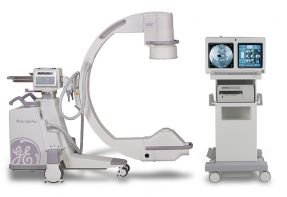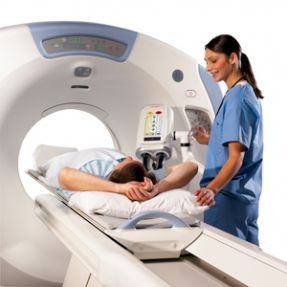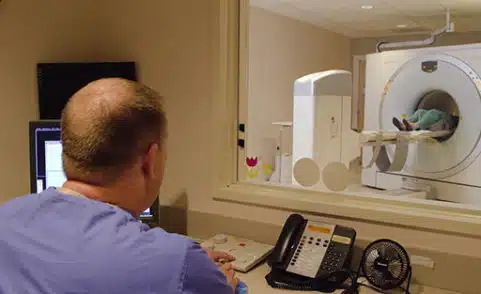
Diagnosing the Underlying Cause of Back Pain with Myelograms
It is estimated that 60 percent of adults have suffered from low back pain in the past three months (American Pain Society). This is significant considering unmanaged pain is a risk factor for anxiety and depression, which is understandable by anyone who has experienced prolonged back pain or radiating leg pain or numbness.
When conservative treatments – exercise, diet improvements, physical therapy or chiropractic care – do not provide sufficient relief, patients often turn to pain medications to mask the symptoms or consider surgery. While these may be appropriate treatments, an interim step could be to better understand the root cause of the pain through medical imaging.
A myelogram is a radiographic examination of the spinal cord and nerves following the injection of a contrast medium (x-ray dye) into the spinal canal. Some possible diagnostic findings from the exam are:
- disc herniation,
- nerve arachnoiditis,
- spinal canal stenosis, and
- bone spurs pressing on nerves.
This is a diagnostic exam that can be used anywhere along the spine from the neck (cervical), to the mid-back (thoracic), to the low-back (lumbar). As a diagnostic exam, it shows us what’s happening but it is not intended to relieve pain.
Watch the Myelogram Video
This illustrated video gives you a look into a patient’s myelogram exam experience.

First, you will lie on a C-arm table (pictured to the right) which is a special medical imaging machine that assists our radiologists in performing the procedure as accurately as possible with image-guidance using fluoroscopy.
The skin in the targeted area is cleaned and then numbed with a local anesthetic. A thin needle is used to inject contrast into the area of the spine thought to be causing the pain.
The radiologist monitors the flow of contrast as the fluid flows up the spine by using controls on the special exam table to tilt your body slightly. This part of the procedure takes about 30 minutes.

While the contrast is still in effect, you will be moved to a computed tomography (CT) suite to gather detailed pictures of your spine. This part of the procedure takes an additional 15-30 minutes.
Results:
As with any medical imaging exam, the radiologist considers the information from the injection along with the additional information from the CT scan images, and writes a detailed report for your provider.
How to Schedule a Myelogram
A health care provider’s referral is required for a myelogram. Talk to your provider to see if you are a good candidate for this procedure.
